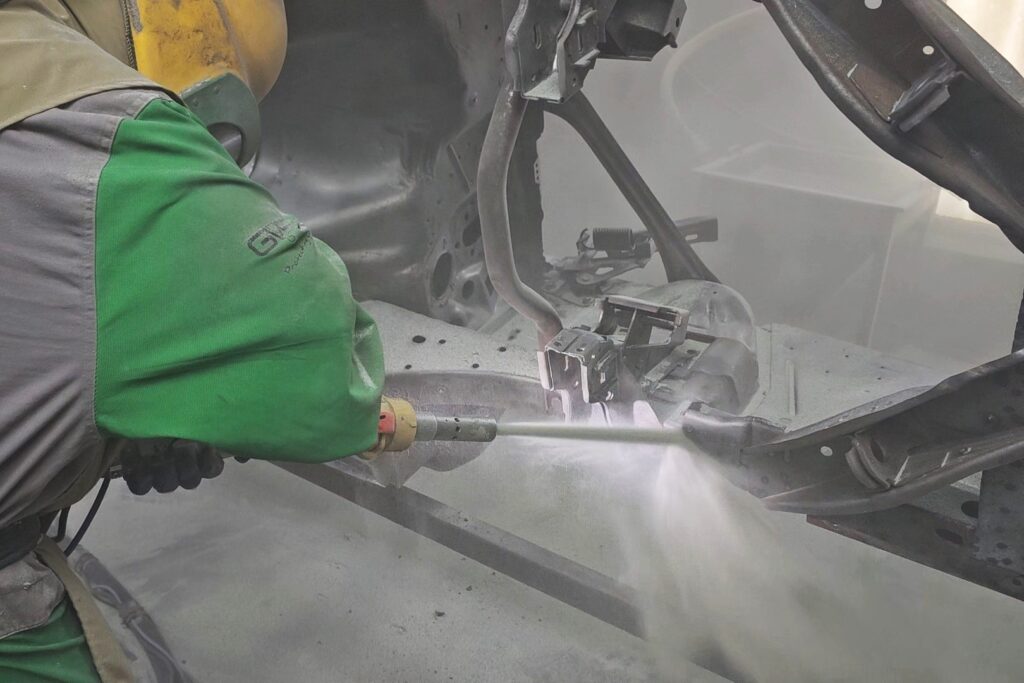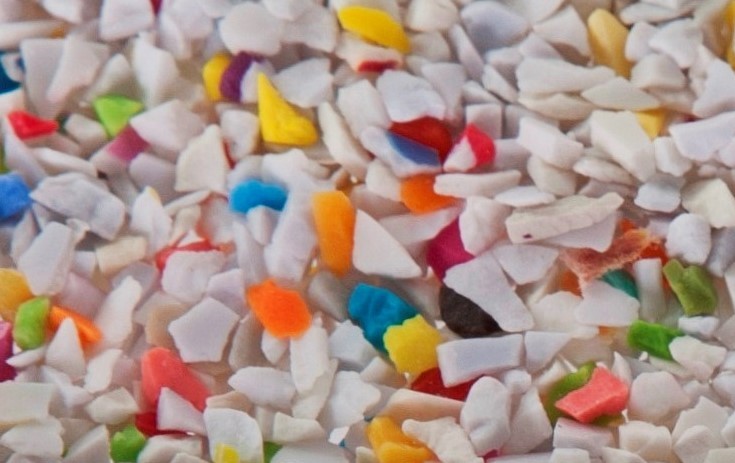Plastic Media Blasting, or plastic sandblasting, utilizes ground plastic abrasives projected through specialized equipment to remove paint and coatings from a variety of surfaces and substrates, as well as for surface preparation.
Blasting with plastic media has a significant number of applications, such as removing coatings like paints and primers from aircraft and automobile bodies; removing contaminants such as carbon buildup from engines; cleaning industrial equipment; deburring and deflashing surfaces; and even removing old finishes as part of furniture restoration.

Plastic Media Blasting History
Plastic media was first researched and implemented by the United States military in the 1980’s as an efficient and cost-effective method of paint stripping for aircraft, landing gear and vehicles without the use of chemical strippers or traditional sandblasting.
The earliest and types of media researched were produced from grinding and classifying thermoset plastics, including Urea and Melamine. These non-melting thermoset plastics offered excellent efficiencies and durability and became the most widely utilized plastic media types. Other types of plastic media were added by the military, and a mil-spec was developed for Polyester (Type I), Urea (Type II), Melamine (Type III) and Acrylic (Type V). Each media type offered unique benefits for specific blasting applications.
As plastic media blasting took off in the 1990’s in numerous commercial and industrial sectors, specialized equipment with air pressure, dust collection and media reclamation became readily available and sought after. In both military and industrial applications, plastic media continues to be widely used for many industrial applications for paint stripping, blasting, cleaning, surface prep, maintenance, and restoration.

Composition Materials has been manufacturing PLASTI-GRIT® Plastic Blast Media from recycled materials since 1987. Please contact us for more information on our custom-manufactured recycled plastic abrasives.
